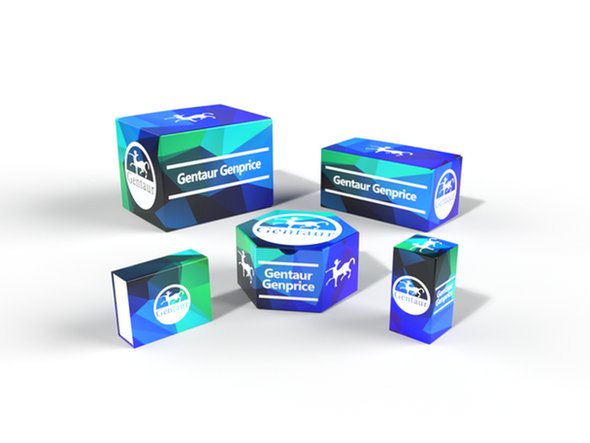749
Human Kallikrein-9 (KLK9) ELISA Kit | KTE61892
- SKU:
- 749-KTE61892
- Availability:
- Usually ships in 5 working days
Description
Human Kallikrein-9 (KLK9) ELISA Kit | KTE61892 | Gentaur UK, US & Europe Distribution
Application: This Human Kallikrein-9 (KLK9) ELISA Kit employs a two-site sandwich ELISA to quantitate KLK9 in samples. An antibody specific for KLK9 has been pre-coated onto a microplate. Standards and samples are pipetted into the wells and anyKLK9 present is bound by the immobilized antibody. After removing any unbound substances, a biotin-conjugated antibody specific for KLK9 is added to the wells. After washing, Streptavidin conjugated Horseradish Peroxidase (HRP) is added to the wells. Following a wash to remove any unbound avidin-enzyme reagent, a substrate solution is added to the wells and color develops in proportion to the amount of KLK9 bound in the initial step. The color development is stopped and the intensity of the color is measured.
Detection Method: Colorimetric
Conjugate: N/A
Sample Type: Cell culture supernatants#Serum#Plasma#Other biological fluids
Assay Type: Multiple steps standard sandwich ELISA assay with a working time of 3-5 hours. It depends on the experience of the operation person.
Kit Component: • Human Kallikrein-9 microplate
• Human Kallikrein-9 standard
• Human Kallikrein-9 detect antibody
• Streptavidin-HRP
• Standard diluent
• Assay buffer
• HRP substrate
• Stop solution
• Wash buffer
• Plate covers
Features & Benefits: Human Kallikrein-9 (KLK9) ELISA Kit has high sensitivity and excellent specificity for detection of Human KLK9. No significant cross-reactivity or interference between Human KLK9 and analogues was observed.
Calibration Range: Please inquire
Limit Of Detection: Please inquire
Usage Note: • Do not mix components from different kit lots or use reagents beyond the kit expiration date.
• Allow all reagents to warm to room temperature for at least 30 minutes before opening.
• Pre-rinse the pipet tip with reagent, use fresh pipet tips for each sample, standard and reagent to avoid contamination.
• Unused wells must be kept desiccated at 4 °C in the sealed bag provided.
• Mix Thoroughly is very important for the result. It is recommended using low frequency oscillator or slight hand shaking every 10 minutes.
• It is recommended that all samples and standards be assayed in duplicate or triplicate.
Storage Instruction: The unopened kit should be stored at 2 - 8°C. After opening, please store refer to protocols.
Shipping: Gel pack with blue ice.
Precaution The product listed herein is for research use only and is not intended for use in human or clinical diagnosis. Suggested applications of our products are not recommendations to use our products in violation of any patent or as a license. We cannot be responsible for patent infringements or other violations that may occur with the use of this product.
Background: KLK9 belongs to the kallikrein subgroup of serine proteases, which have diverse physiologic functions in many tissues.KLK9 is primarily expressed in thymus, testis, spinal cord, cerebellum, trachea, mammary gland, prostate, brain, salivary gland, ovary, and skin.KLK9 is under steroid hormone regulation in ovarian and breast cancer cell lines and is a potential prognostic marker for early-stage ovarian and breast cancer patients.Based on homology between the human and mouse kallikrein loci, Yousef and Diamandis defined a 300-kb human kallikrein gene region on chromosome 19q13.3-q13.4. Within this region, they identified a new kallikrein gene, KLK9, which they designated KLKL3. The deduced 250-amino acid KLK9 protein has a predicted molecular mass of 27.5 kD and shares 40% amino acid sequence identity with KLK11.
Alternative Names: KLK9; KLK-L3; KLKL3; kallikrein 9; kallikrein-like protein 3
Search name: KLK9; KLK-L3; KLKL3; kallikrein 9; kallikrein-like protein 3
Tag: KLK9






